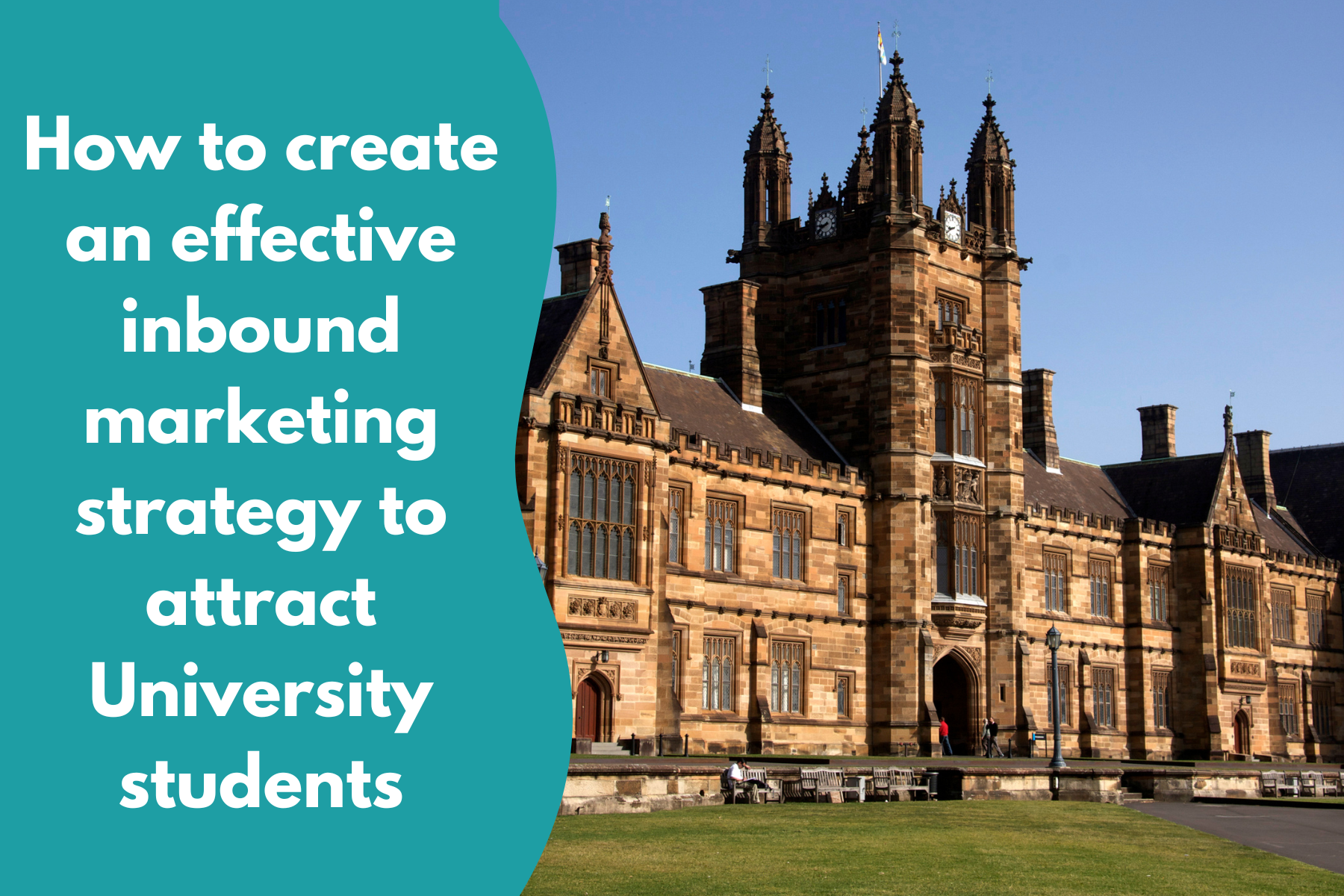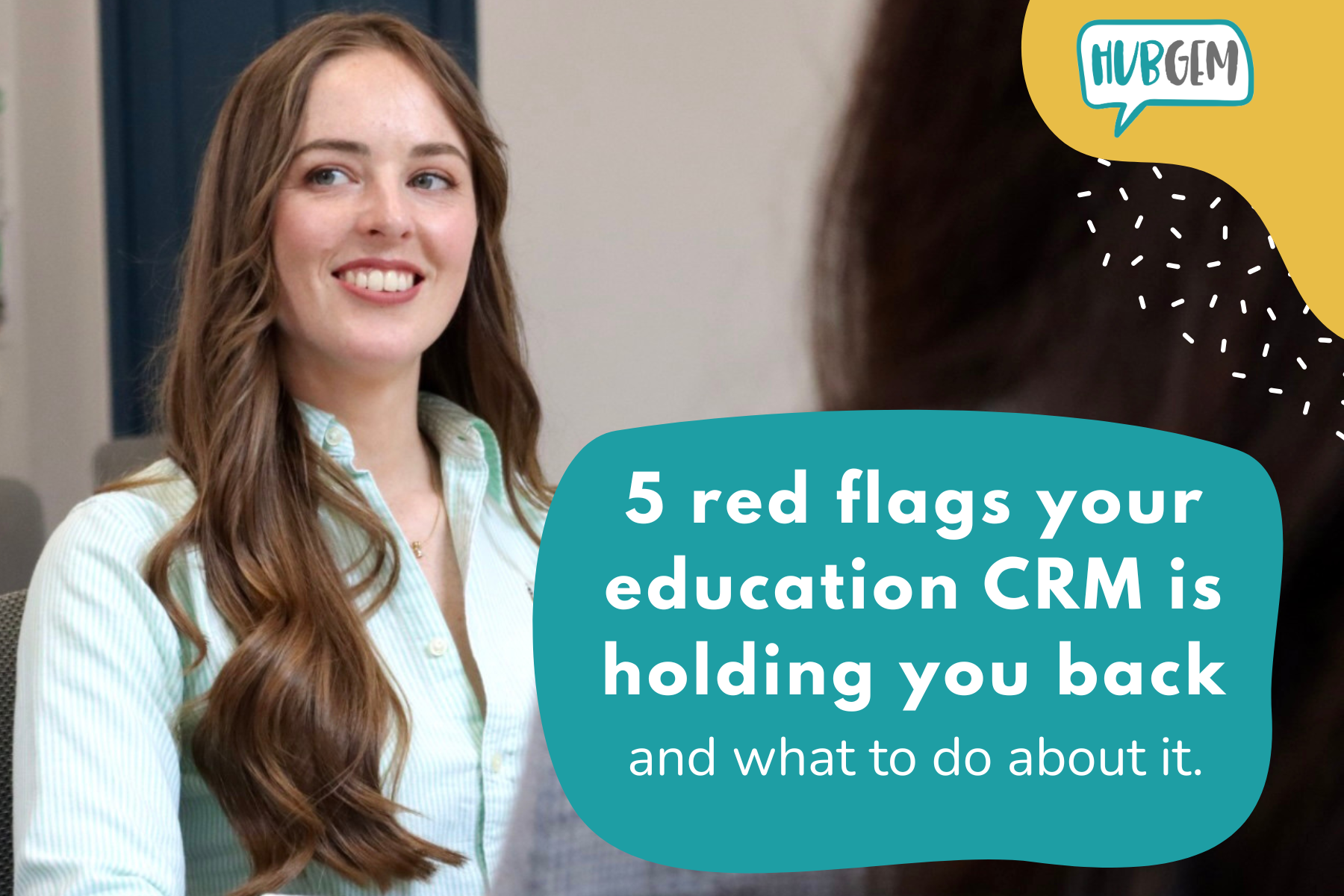There’s usually a question around what inbound marketing is and how this can be implemented in the education sector. Inbound marketing is a strategy of growing an organisation by building meaningful, lasting relationships with prospects. This can be applied to the education section as universities can attract prospective students with engaging content, interact and convert students, and then to continue interacting and supporting students once they enrol at the University.
There are 3 stages of the inbound marketing flywheel which can be applied to the education sector to create an effective inbound marketing strategy:
Attract: drawing in the right prospective students with valuable, engaging content
Engage: to communicate with prospects to provide solutions and give insight
Delight: to continue supporting and empowering students once they enrol at the University

Let’s break this down...
Attracting prospective students to the University
Content creation is a huge resource to attract prospective students to your university and to reach your target audience. For example, the types of content you can create and publish are blog articles, social posts, and ads for open events. This content needs to be engaging and provide value for your prospective students, delivering the right information to them about what you offer at the University. It’s also key to have conversion actions in your content which enables you to engage with the prospective students. A conversion action could be a call-to-action button that leads to a form for example.
Content examples:
- A guide on how to choose the right University
- Social posts and ads about upcoming open days and course days
- Social posts about current student testimonials and experiences at the University.
- Course specific guides of what the University offers

Tailoring your content to your specific target audience and lookalike audiences is great for attracting and converting too. We suggest looking at your current target audience and assessing if these are the prospective students you want to attract. Creating student personas is also a great tool to help you understand who you want to attract to your university, and this will influence the content you publish. Do these prospective students live in a certain area, are of a certain demographic, or have certain behaviours for example.
A great tool to help here is looking at your SEO. What keywords are prospective students searching for when looking for universities, and how can you tailor your content around these key words. HubSpot SEO and topic cluster tool can help with identifying these keywords and map out your content around this.
Engaging with prospective students
Once you attract prospective students to the University, it’s important to engage with them. This stage of the customer journey is key to converting these prospective students into enrolled students. This stage allows you to engage with these students and start building these long-lasting relationships.
Every conversation needs to be tailored, personalised and effectively assure the prospective student that the university is right for them. It could be useful to look at how you manage incoming enquiries from prospective students. Is this through a shared email inbox, by event forms, or phone calls for example. Having a well-thought-out process from initial enquiry through to enrolment will help you manage enquiries, as well as keeping the communication personal to the prospective students’ needs. Also, this stage is where you are capturing key information about students such as contact details, course preferences and interests, so you should consider how this information is stored – a CRM database, website forms, and call to action conversion buttons in your content to capture this information.

Delighting enrolled and current students
It may be perceived as once a prospective student enrols, you don’t need to continue the personalised communication or content engagement, however this is key. It's important to continue engagement with current students as they are your biggest promoters!
Once a prospective student enrols and becomes a current student, you need to ensure that you are providing continued communication and support. You could use tools such as live chat and automated chatbots to help support your current students with any questions they may have throughout their time at the University.
Also, continue to engage with current students via social posts, blogs or promoting events. You could use social media as a tool to promote student success stories and testimonials of students at the University and their experiences. This won't only promote how great the University is, but also appeal to prospective students in the next intake. You can continue to use ads to promote events at the University like social events to attract current students. Email marketing is also a great tool to keep your current students up to date with University news and events. This allows you to continue engaging with students personally using personalisation tokens and smart content but isn’t always consuming.
Therefore, by following these 3 steps of the inbound marketing flywheel you will be able to create an effective inbound marketing strategy that will attract, engage and delight prospective students to current students.
Similar Blog Articles
.png?width=150&height=101&name=HUBGEM%20Logo%20-%20smaller%20logo%20(1000%20x%20673).png)


.png)
%20-%20Marketing%20studio%20analytics.png)


%20-%20AEO.png)